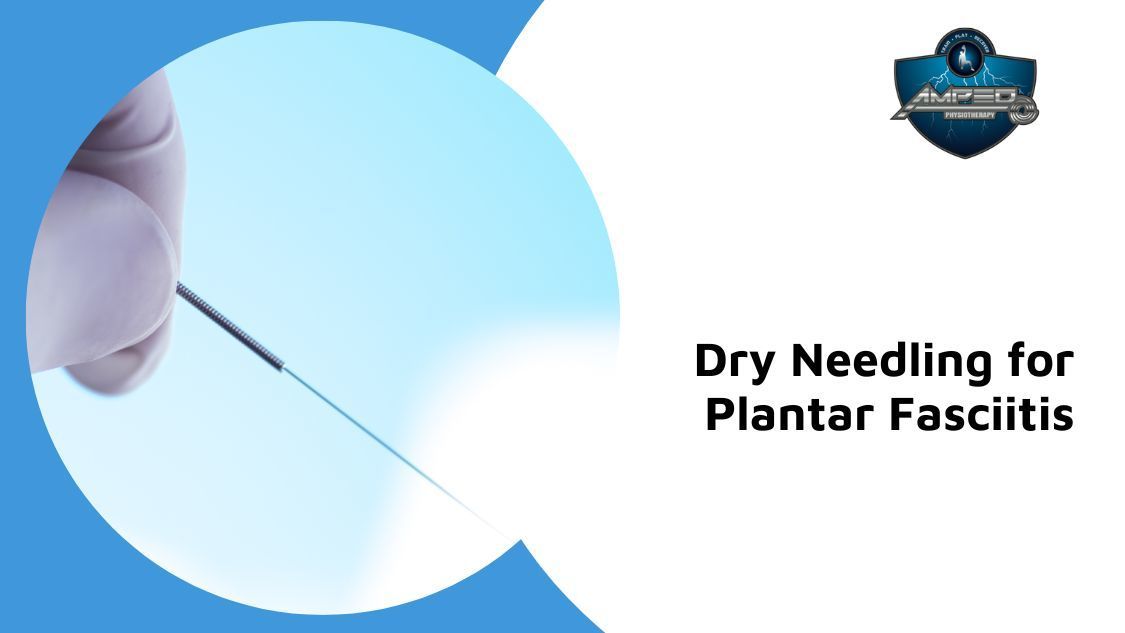
If you’re reading this, you probably actually know how uncomfortable plantar fasciitis is. The pain typically starts as a dull ache in the bottom of your foot that becomes worse with prolonged standing or walking. In fact, plantar fasciitis is one of the most common causes of heel discomfort, accounting for approximately 85% of all cases.
If you are suffering from the aches and discomforts of plantar fasciitis, we’ve got good news: Dry needling which is also referred to as IMS Therapy is an effective treatment for plantar fasciitis (and other uncomfortable ailments triggered by weakness or tightness in certain muscles). By targeting these trouble spots, dry needling can help you get back on track by relieving the pain of plantar fasciitis and helping to prevent future flare-ups.
Even though other therapies for plantar fasciitis may be much better known, dry needling for plantar fasciitis is becoming a popular therapy option due to the fact that it helps alleviate discomfort, minimize inflammation, and speed up muscle healing without drugs or intrusive techniques. If you’re dealing with plantar fasciitis, here’s what you should understand about dry needling for plantar fasciitis and how it can help you enjoy a more pain-free lifestyle.
What is Dry Needling?
Dry needling is the practice of placing a needle (usually a thin, strong needle made from superfine acupuncture needles) into tight, sore muscle tissues to lessen their tension and soothe their overactive response. Dry needling is typically utilized as one component of a therapeutic treatment plan for pain management and sport injury rehabilitation. Dry needling is sometimes also described as trigger point dry needling or intramuscular stimulation (IMS).
Trigger points take place when there is too much pressure and tension in particular muscle tissues, triggering knots to develop in the tissue. Dry needling is applied to help release the knots in the muscle mass and enhance blood circulation, which may help decrease discomfort and enhance the range of movement in the muscles.
How Does Dry Needling for Plantar Fasciitis Work?
Dry needling is a relatively quick and simple method to focus on and relieve the muscle tissues in your foot that are inflicting your discomfort. By focusing on these muscle tissues, dry needling can help in reducing tension on the plantar fascia and, as a result, minimize your aching.
Dry needling is most beneficial when applied to the plantar fascia and the muscle groups surrounding the bone tissues in your foot, including the structures around the heel, the bones near the arch, and the bones in the ball of your feet. Actually, dry needling is often put together with other treatment methods for plantar fasciitis, such as exercise therapy, so as to minimize discomfort and enhance movement.
Exactly Why is Dry Needling a Beneficial Treatment for Plantar Fasciitis?
Dry needling can be a successful solution for plantar fasciitis because it reduces the strain and pain in the muscles surrounding the plantar fascia, which can help ease pressure on the area and decrease pain. By releasing the tension in the muscle tissues that are triggering your discomfort, dry needling can help you to walk in comfort once again and decrease the danger of future flare-ups.
In addition, dry needling may be extremely effective in dealing with the pain brought on by trigger points and can likewise help to prevent muscle spasms. Plus, dry needling can also stimulate the body to deliver neurotransmitters like serotonin and endorphins, which minimize discomfort and improve mood.
Items to Know Prior To Getting Dry Needling for PF
Before you have dry needling for plantar fasciitis, it is very important to be mindful that all dry needling is not created equal. Most importantly, you ought to make sure that your dry needling treatment is carried out by a knowledgeable specialist who is experienced and trained in dry needling. You don’t want to make the error of going to a centre that offers dry needling treatments but isn’t actually certified and trained to do it.
You ought to likewise make certain that you’re going to a trustworthy clinic to get your dry needling. Licensed and respectable healthcare service providers who provide dry needling for plantar fasciitis will consistently use sterile, single-use filaments that are designed for usage on humans only. They’ll also ensure your therapy is safe and effective by asking you questions concerning your health conditions, medical history, and any allergic reactions or sensitivities you may have.
How Frequently Should You Get Dry Needling for PF?
The length and frequency of your dry needling sessions can vary depending on your individual needs. You and your physiotherapist will discuss this in the course of your first treatment session. Nevertheless, in general, the majority of individuals benefit from one to three sessions each week for two to six weeks. By addressing your foot and the areas surrounding your plantar fascia with dry needling, you can help to relieve your discomfort and begin to recover quicker.
After having dry needling , you really should follow up with self-care strategies, including maintaining a healthy lifestyle, working out, icing your foot as necessary, and wearing supporting shoes. It’s also essential to keep in mind that dry needling for plantar fasciitis is a treatment method and not a remedy. You will likely need to receive dry needling periodically if you want to remain active and pain-free.
Tips For a Successful Recovery With Dry Needling
Here are a few pointers to ensure an effective rehabilitation with dry needling for plantar fasciitis:
- Take excellent care of your feet – Make sure that you’re doing whatever you can to avoid triggering more harm to your foot. This consists of remaining hydrated, wearing supporting shoes, icing your foot as necessary, applying heat to promote blood circulation and speed healing, and taking time off from your activities to let your foot recuperate.
- Get follow-up therapy – Getting follow-up therapy soon after your preliminary therapy sessions are finished will help to guarantee you get the maximum benefits of dry needling and will help prevent future agonizing flare-ups.
- Stay active – After receiving therapy for plantar fasciitis, work on staying active and keeping your foot healthy.
How to Begin With Dry Needling
If you’ve come to a decision that dry needling is right for you, the very first step is to find a certified and reputable healthcare service provider who offers treatments that include dry needling. From there, make certain that you follow the steps we noted above in order to make sure that you get the best outcome out of your therapy.
When you’re prepared to get dry needling for plantar fasciitis, it is crucial to keep in mind that dealing with the pain and discomfort of plantar fasciitis isn’t a life sentence. With dry needling and other treatments, you can break the cycle of pain, get back on your feet, and resume living the method you desire to.
Give Amped Physiotherapy a call today and we can begin alleviating your plantar fasciitis pain. Now booking new appointments!










